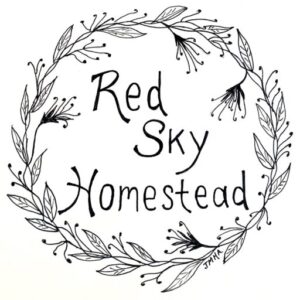Wild Cherry Bark- An Herbal Remedy

Cherry Bark has a history of medicinal uses dating back to the Native Americans and continues to be used as an herbal remedy today.
All natural herbal remedies are a keen interest of mine. So when I found this old bottle on our property my interest was piqued! We have been lucky enough to find some really cool treasures around the homestead property we bought. This bottle was one of them. It is in perfect condition, and although not as old as some of the originals, it still has a pretty cool story and has led me to be more knowledgeable about one herbal remedy that can be made at home to added to the herbal apothecary!
Balsam of Wild Cherry
The bottle says, “Dr. Wistar’s Balsam of Wild Cherry.” This piqued my curiosity and I had to research what exactly was in this bottle and when. What I discovered is pretty interesting and I learned something I never knew before.

But first let me say where in the world, geographically speaking, this bottle was found. My husband and I bought an 1800’s small farmhouse located in what is known as the Leatherstocking region so named for the unique leather leggings worn by frontiersmen, and made famous by the literary work of James Fenimore Cooper. So you can imagine what the area must have looked like in the 1800’s.
Mass Marketed in the 1840s
Dr. Wistar’s Balsam of Wild Cherry was first created in 1840 by Henry Wistar of Virginia. It was on the market for over 100 years and was heavily advertised on the east coast of the United States and in Canada as an herbal remedy for all respiratory ailments including throat, chest and lung disease including consumption! That’s right, now known as Tuberculosis which was the leading cause of death during this time in history. Made from cherry bark extract, alcohol and opiates, it probably did a fine job of relieving the pain a person would be experiencing if afflicted by a serious respiratory illness. Allegedly it cost just one dollar a bottle and was quite affordable which made it even more tempting.
Native American Uses for Cherry Bark
Cherry bark is known in history for its beneficial use to treat colds, cough and bronchitis as well as other ailments. It was revered by several Native American tribes including Algonquin, Cherokee, Iroquois, Ojibwa, and Potawatomi as a powerful medicine. Cherry bark was so renowned for its remarkable healing properties that it is even documented that the explorer Captain Meriwether Lewis (of the Lewis and Clark Expedition) used it when he fell ill on his travels. He was reportedly back on his feet the very next day!
The Pin Cherry Tree
To be precise, the bark used is from the Pin Cherry tree which is a slender, deciduous, tree. The bark peels off in horizontal strips from the trunk, which grows to be about twelve inches in diameter. The tree itself can reach thirty feet in height. The pin cherry fruit grows in small clusters of small bright red berries and the Native Americans ate them in abundance both fresh and dried. They would use the dried fruit for winter food, hunting trips, and add them to soups. The bark was made into infusions, and depending on the tribe, was used to treat stomach pains, sore eyes and even blood poisoning!
Modern Day Herbal Remedy
Today you can purchase cherry bark in dehydrated form as well as extract. One such reputable place to purchase it from is Mountain Rose Herbs (https://mountainroseherbs.com/) where their guiding principles focus on sustainability, fair trade, and organic agricultural practices. Kits to make cherry bark syrup can also be purchased through Farm House Teas (https://www.farmhouseteas.com/products/wild-cherry-bark-syrup-kit), a family owned small business.
Disclaimer
As with any herbal remedy, please check with your medical professional prior to using. These statements have not been evaluated by the FDA and are not meant to treat or diagnose any illness.


